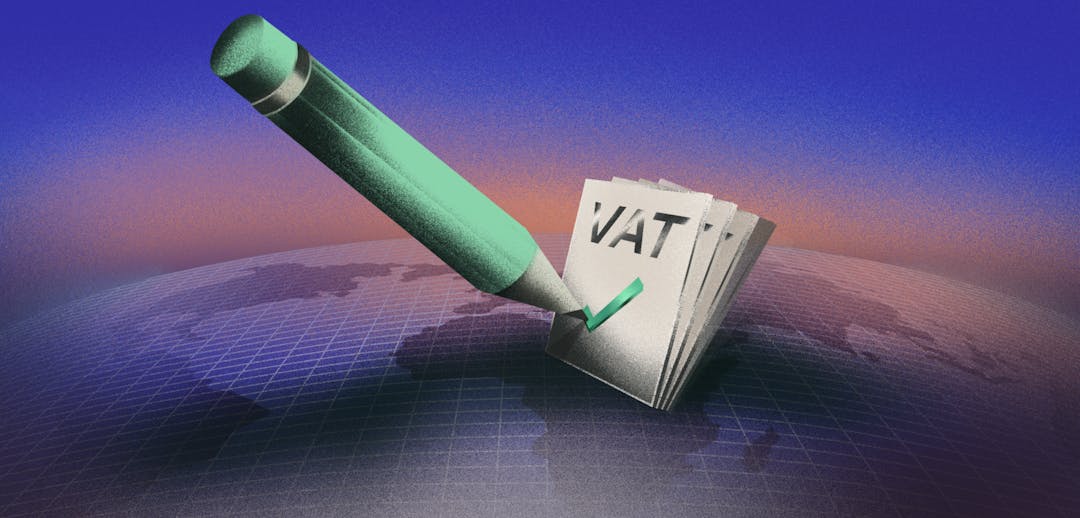Welcome to Part Two of Selling SaaS Globally, a practical handbook for SaaS leaders looking to scale their business globally.
Even the best product in the world won’t take off if it’s not supported by a robust go-to-market strategy. Your sales and marketing teams are responsible for building an audience for your product and getting it into the hands of users.
There are four key components in a go-to-market strategy:
- Target market
- Product-market fit
- Pricing strategy
- Distribution and adoption plan
Identifying target markets and finding product-market fit will form part of a business’ mission and growth strategy. And as the people on the front line, interacting with users and buyers every day, your sales and marketing teams should be feeding into those conversations.
Sales and marketing have an even bigger part to play in determining your pricing strategy and distribution and adoption plan. Though these can seem like superficial details, they’re not. Pricing is an important growth lever and is closely tied to how you communicate value to your customers. In a market as fast-moving as SaaS, you can’t afford to make a bad first impression. Looking at pricing, checkout, and communications will help you put your best foot forward.

Pricing strategy when selling SaaS globally
Thinking strategically about pricing models and putting processes in place to ease handover from sales to finance can help you capture more revenue, faster. Your pricing strategy needs to consider:
- What drives product value in each market
- Different pricing models
- The technology needed to support different billing models
Why is this a challenge?
Establishing the right price for your product is not as simple as picking a number. You need to consider willingness to pay across your customer segments, and your product value in different markets – both of which will change over time.
Willingness to pay refers to the perceived value of your product in the market. It changes from customer to customer and market-to-market. Here, seasonal trends, the state of the economy, the competitive landscape, and how you differentiate yourself all come into play.
Perception of value can also be affected by your pricing model. If your customers are using your product daily then charging one flat monthly subscription fee feels like a good deal. If they only use it occasionally, they might see things differently.
How to solve the problem
1. Research product value in the local context
To get a holistic view of your product’s comparative and absolute value, your product, sales and marketing teams will need to work together. They’ll need to:
- Look at the objective value of your product (ie. its features, and if/where there are variations in availability)
- Map that value to customer needs
- Define your unique selling points (USPs) against local competitors
What are the benefits?
Understanding the nuance of product value is critical to help you decide an appropriate price point for each market. It also gives sales and marketing teams the material to create compelling messaging that communicates tangible value to customers.
2. Choose the right pricing model
SaaS businesses use a variety of different pricing models. Some of the most common include:
- Fixed: One flat rate for all features, with no limit on the number of users or projects.
- Tiered: Different rates for different combinations of features, or levels of access, eg. basics/standard/premium packages.
- Usage-based: A variable rate based on how much the product is used; essentially ‘pay as you go’.
- Per seat: A rate charged for each user or license holder.
As your product grows into new markets, you may need to change your pricing model to match your product value
What are the benefits?
Experimenting with pricing models can be a significant driver of growth. 40% of companies that regularly alter their pricing report a 25% higher increase in ARR as a result.
3. Implement a CRM
Customer relationship management (CRM) software helps track all touchpoints with targets from first outreach, to billing, to marketing, and beyond. It can help automate sales operations, like invoicing and contract management. As you expand internationally, CRMs can help you send invoices and contracts that are compliant in each geography, and translated into local languages.
What are the benefits?
Used consistently, CRMs enable you to keep your payment, sales, and billing data consistent. This is important as you grow; while manual revenue recognition is easy enough with a small pool of clients, accuracy can suffer as it expands. CRMs also ease friction for finance teams downstream, by ensuring sales teams send contracts and invoices correctly, so revenue can be collected quicker.

Local checkouts, globally
For businesses using a product-led model either entirely or in addition to a sales-led motion, selling globally is dependent on your checkout. And that means making it easy for customers to pay according to their local preferences by supporting a range of local payment methods and accepting local currencies in your checkout.
Why is this a challenge?
Customers in different parts of the world have very different preferences when it comes to payment methods. Around 50% of sales under $50 are paid for through digital wallets in Germany. Meanwhile, in China, AliPay is trusted by 81% of consumers. By adding optionality at checkout, you’ll be able to service a larger portion of your target market.
Likewise, charging in a local currency can boost payment acceptance by as much as 9%, while enabling multiple currencies can help your business grow faster overall, outstripping competitors by 26%. If you can’t accept different currencies, you’ll have to pay FX fees to convert them, and that increases the likelihood of cross-border payment failure.
How to solve the problem
1. Use a payment processor
Payment processors typically offer multiple payment methods and currencies.
What are the benefits?
Payment processors give you access to a range of different currencies, and the use of different payment methods, without you having to build functionality yourself. This frees up expensive product and technical team resources for more strategic work.
Things to consider
Few, if any, payment processors are able to support the complete range of currencies and payment methods. You’ll need to integrate with different payment processors in each geography to get full global coverage. This requires engineering time, taking away from your product development, and means incurring costs from multiple vendors.
2. Sell through a merchant of record
As a reseller and unified solution, merchants of record (MoRs) are integrated with multiple payment processors and are often able to offer more payment options out-of-the-box as a result.
What are the benefits?
Working with MoRs lets you tap into a global payment network through a single integration point. This reduces backend complexity for product teams because you can achieve the same (or better) results from one integration.
Things to consider
While they are likely to have more payment options ready for you to “turn on” right away, new payment methods are gaining traction all the time. It could take time for new payment methods, like cryptocurrencies to make their way onto an MoR’s product roadmap.

Localized marketing communications
To attract and retain customers across markets, you need to understand their specific motivations, pains, and cultural contexts, and adapt your communications accordingly. To help improve engagement and win share of voice, you should:
- Research your target buyers and the competitive landscape in each geography
- Adapt both messaging and language
- Leverage partners to grow trust and local traction
- Understand and comply with local privacy regulations
Why is this a challenge?
If you can’t speak to customers in their language and in a way that respects their culture, you’ll struggle to win the trust and attention of a large share of your target market. The numbers are significant: while much of the world’s population speaks English, it’s only the preferred language for 26% of people globally. One in five prefer Chinese, and 8% prefer Spanish.4 That means a localized marketing strategy presents a much bigger opportunity than an English-only strategy.
In addition to understanding the expectations and nuances in different markets, you also need to make sure that your marketing and seller communications are compliant with local regulations. This covers things like GDPR in Europe or the California Consumer Privacy Act (CCPA).
There’s a lot to consider. Even down to the types of email you can send to customers – the rules around that aren’t the same. What you can send to customers in the US is different from what you can send to customers in Germany.
Peter Nesbitt, COO, TeamPay
How to solve the problem
1. Conduct region-specific research
As you target new markets, conduct research to inform your go-to-market strategy. Some things to consider:
- Local competitors
- Marketing channel preferences
- Tone and messaging preferences
- Search terms and SEO keywords relating to your product that will help target users find your website
What are the benefits?
Identifying cultural and linguistic nuances can help you avoid alienating customers and capture a greater share of search traffic. The US and the UK share the same language, but different usage: an SEO strategy that’s optimized for 'car' instead of 'automobile' will suffer in the US.
2. Regionalize campaigns and content
Translate all content, including website, email, advertising, and SEO keywords, and create regional newsletters and content where possible. This is a considerable undertaking, so initially you should think strategically about where and when translation will be most valuable.
What are the benefits?
Content that feels personalized to your target market performs better. Localizing post-purchase emails alone can increase click-through rate by 52%.
3. Work with local partners
Partner with local thought leaders, influencers, and distribution partners to leverage their audience while you grow your own. If you have field teams, create frameworks within which they can adapt and repurpose centralized campaign materials.
What are the benefits?
Working with brands your audience already recognizes and trusts helps you raise awareness quickly as you enter new markets. Similarly, team members that are already on the ground should have a good understanding of what will and won’t work. Trusting them to tailor global messages to local audiences will save you having to develop multiple campaigns from scratch.







